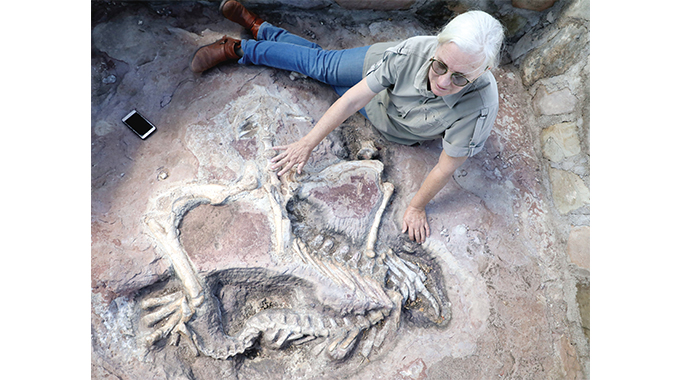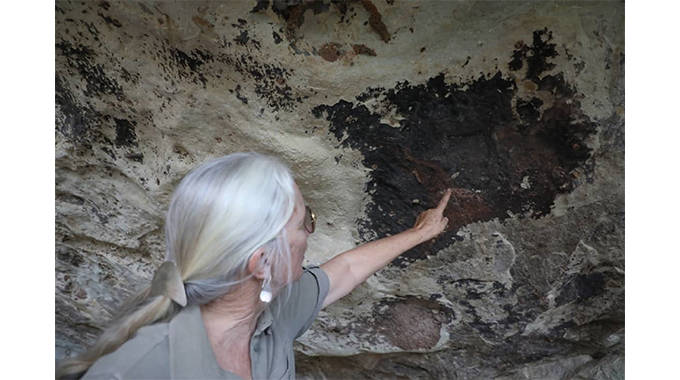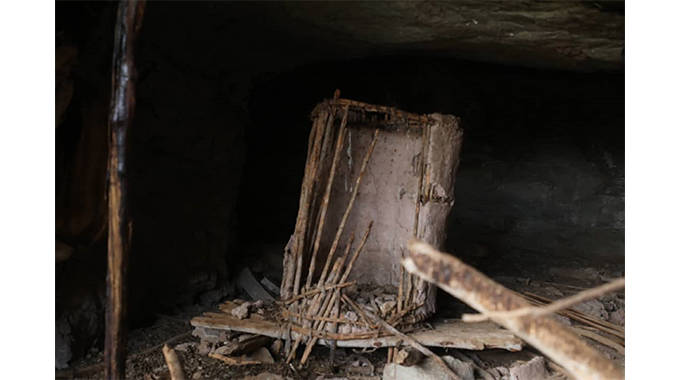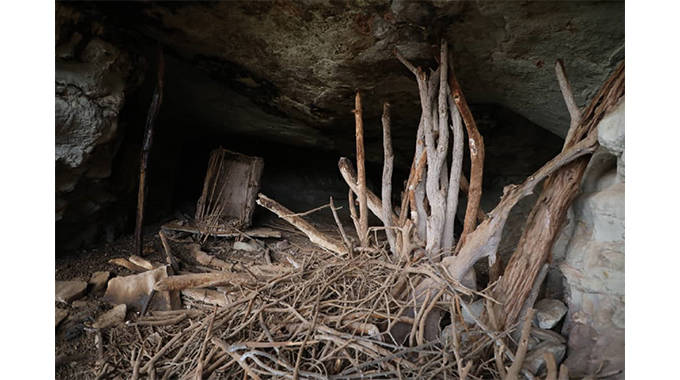
Mashudu Netsianda, Senior Reporter
SENTINEL Safaris is a little-known yet outstanding tourist attraction tucked away in Beitbridge district in the largely rural Matabeleland South province.
It is an untapped tourism gem boasting rich historical sites which include numerous sites of dinosaur fossil beds and magnificent middle to late Stone Age rock paintings.

The safari area has beautiful and unique chalets for visitors, which are perched on beautiful mountains and surrounded by forests and many rock outcrops featuring boulders of all shapes and sizes.
Located about 60km west of Beitbridge town within the geographical confines of Greater Mapungubwe, a vast safari area jointly owned by Zimbabwe, Botswana and South Africa, Sentinel Safaris is a must-visit, an ideal destination for safari hunters and photographic safaris.
The area is rich in fauna and flora with more than 400 bird species, mopani woodlands and heritage archaeological sites related to African societies that lived along the Limpopo Valley more than 1 000 years ago.
It is, however, the dinosaur fossils that date back some 200 million years, which are a hidden treasure.
The remains of Massospondylus that dates back 200 million years can be viewed in its almost intact state with the hind-end uppermost at Sentinel Safaris.
Although there are other part specimens of Massospondylus, which have been found and recorded in the immediate area, the most complete specimen found and excavated so far has the rear half of the dinosaur resting on its back with intact hind limbs splayed symmetrically to each side.
Massospondylus was named by Sir Richard Owen in 1854 from remains discovered in South Africa and was one of the first dinosaurs to be named.
Other specimens have since been found at other locations in South Africa, Lesotho and Zimbabwe with other remains from Arizona, Argentina and India but the Arizonan and Argentinian material are now assigned to other genera. Sentinel Safaris co-director, Mrs Vanessa Bristow said the area, which has been their home for over five decades, has become a very significant feature since the discovery of the large dinosaur fossil beds. She said there are at least 12 known sites that are between 190 and 240 million years old although we continue to discover more.

Many of the fossils are found permanently frozen in situ in sandstone deposits scattered over hillsides and on sites eroded down over millions of years.
In some cases, the fossils spill out of softer ground in loose pieces like pebbles, or in fragile, shattered fragments found in shale areas.
One of the sites was discovered around 1994 when a member of the family stumbled on the clearly visible vertebrae, ribs, and pelvis and leg bones in their sandstone sarcophagus while walking on the farm with friends. Another site was discovered on Christmas Day in 2006 by their son Adam Bristow when he was sent with his brother to look for fossils with their new folding pick-and-spade sets.

“Sentinel Safaris is well known for its dinosaur fossils and we have one that is very special which is the remains of the Massospondylus that dates back 200 million years when the continents were still together as one and when there was an area called Gondwanaland which encompassed India, Madagascar, Africa, South America and a bit of North America. To put this in a chronological context, the animals that walked the earth at that time lived on the super-continent of Gondwanaland before continental drift separated these continents to their present locations,” she said.
“We also have a pre-crocodilian ancestor that dates back to 240 million years and we found its teeth in some of the fossil beds here. It was a big and ferocious animal, but it was more like a crocodile.”
Mrs Bristow said there is also another species called Dinosaur Euskelosaurus and the fossil beds were found on the mountain at Sentinel Safaris.
“Where fossils have been collected to protect them, we need to develop the sites and make them viewable and attractive. In addition, we hope that they (fossils) can one day be displayed in a proposed museum in TFCA, for public enjoyment and where paleontologists can gather to further research these fossil records,” she said.
Mrs Bristow said there are a lot of excavations which they intend to do with the assistance of a palaeontologist to uncover more sites within the area, but however, lack of resources hampered their plan.
Sentinel Safaris is also home to artefacts which belong to people who lived along the Limpopo Valley.
She said setting a museum in the area would attract visitors to the place.
Some of the artefacts found in the area include grain bins, which were used by communities that lived along the Limpopo Valley between 1835 and 1850 during the area when Ndebele King Mzilikazi was raiding northwards while fleeing from Zulu King Shaka.
“These people were fleeing from Mzilikazi and they had to build grain bins so that they could hide their grain as they could not afford to lose their food,” said Mrs Bristow.
She said through rock paintings, the San community believed that their spiritual world was on the other side of the surface of the rock.
She said through the paintings, it was a way of communicating with their spiritual ancestors.
Mrs Bristow said there is an urgent need to develop more tourists’ attractions in the TFCA which could improve arrivals in the mega-park.
She said the Greater Mapungubwe TFCA has great potential to be the destination of choice for local and international tourists.
Mrs Bristow urged Government to expedite the construction of a tourism border between South Africa and Zimbabwe, which links the two countries’ components of the mega-park.
While launching the Visit Zimbabwe Promotion Campaign in October last year, President Mnangagwa said tourism is one of the major pillars underpinning the growth of the country’s economy and attainment of Vision 2030.
The initiative came against the backdrop of the launch of the National Tourism Recovery and Growth Strategy that seeks to create a US$5 billion tourism sector by 2025.
The National Development Strategy 1 (NDS1), which the President again launched last year also identifies tourism as a critical piece of the puzzle in the attainment of Vision 2030.-@mashnets
